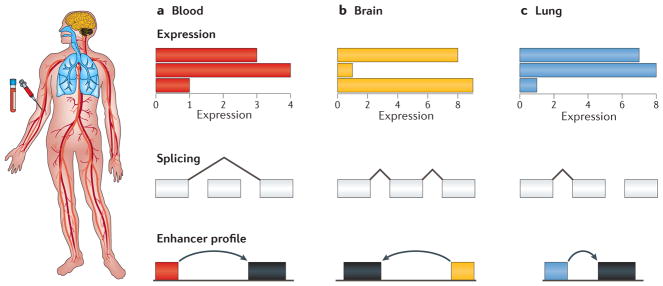Figure 3. Finding the relevant tissue.
Although blood (part a) is often the most convenient tissue to assay owing to its availability and ease of procurement, it is often not the ideal tissue for observing a molecular phenotype for a given disease, which may primarily affect other tissues such as brain (part b) or lung (part c). In particular, its transcriptional landscape, including expression levels, splicing patterns and enhancer usage, may not be amenable to detecting differential uses of these patterns compared with a tissue that is more proximally affected by a disease, such as muscle tissue in muscular dystrophy.

